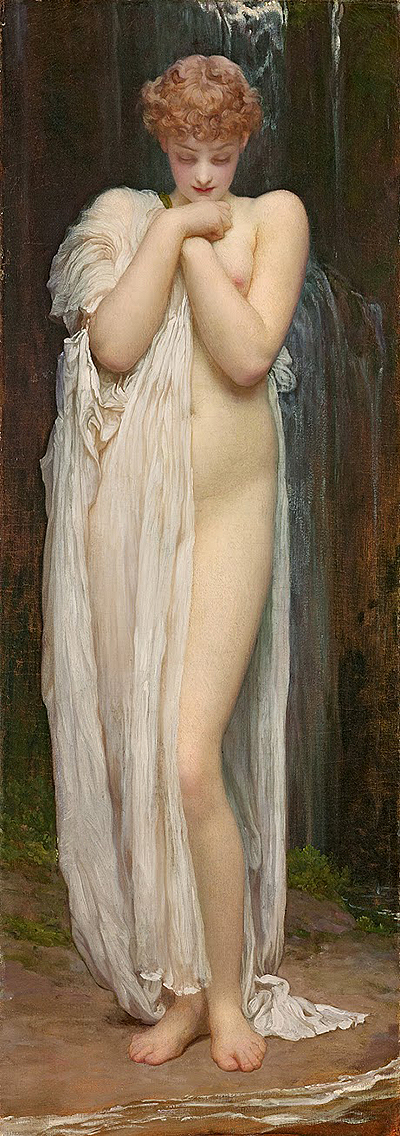When Leighton visited the mansion of his Irish friend Powerscourt, he asked him to paint a picture to hang in his house. Leighton wanted to personalise the painting of his friend, so he thought about the river that crossed his friend farm and imagined a beautiful nymph caressed by the River Dargle's water.
Thus, the inception of an idea that led to the birth of Crenaia, the nymph of the Dargle sculpture. The seductive image of this beautiful art painting was created in 1880 and displayed at Fredric Leighton's house museum. The image depicts a muse and a close friend of Fredric Leighton, Dorothy Dene. Here she is poised as Crenaia, and she is easily recognisable through her sharp features and a head of little curls. Dorothy Dene was a model, an actress and might have been a possible lover of Leighton. The sculpture depicts her as a nymph, although Dorothy was born and raised in Enniskerry, Ireland. The beautiful maiden, rise from the waters of river Dangles that ran across Lord Powerscourt's estate, the first owner of this painting.
Crenaia half-neglected drapery with folds reflects the whitish colour of the waterfall behind her. Reflection from the waterfall gives her skin a magical glow. The vertical shape reflects the waterfall, a realistic depiction of the highest waterfall in Ireland. Putting sexuality to one side of the elongated figure is a striking composition. The tall thin elongated body and pinkness of the fresh stand out against the deep darkness of the background. The white gown to the left display reflection from the waterfall and could be mistaken for wings. Crenaia is standing almost naked, and folding her arms over the chest. The image mimicked Dorothy Dene, a model he had met in 1879 and became her favourite. Later, the viscount of the Powerscourt acquired Crenaia (The Nymph of the Dargle) sculpture along with other Leighton's work.
Today the paintings are held by Juan Antonio, a billionaire businessman of Spanish origin, but raised in Mexico. Juan Antonio, an art collector, owns most of the best private collections of Victorian art in the world. Fredric Leighton was one of the most influential artists and used oil paint and canvas paper to do most of his paintings. He used the same materials to paint this sculpture. He was a brilliant, stylistically and virtuosic painter of bodies and landscapes and used the neoclassical style of painting in his works. While in Europe, Leighton received his artistic training from Eduardo and Giovanni. Other artists that influenced him are Jean Ingres, Eugene Delacroix, Jean Corot and Paulo Veronese. Through his adventurous creative work, Leighton has credit as having inspired Jules Dalou, a French sculptor in the 1870s in London. Other sculptors influenced by Leighton are John Waterhouse, Dante Gabriel Rossetti and Harry Bates.




